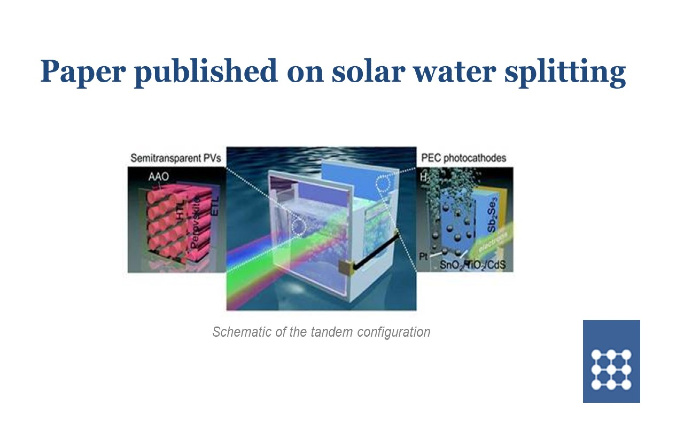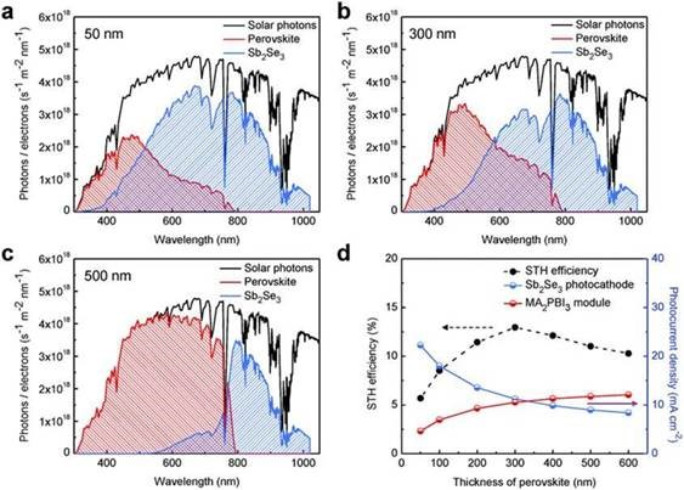Paper published on solar water splitting

Solar water splitting exceeding 10% efficiency via low-cost Sb2Se3 photocathodes coupled with semi-transparent perovskite photovoltaics.
An article by Drs Jon Major and Laurie Phillips came out last week in the high impact Energy and Environmental science journal and is the second publication from an ongoing collaboration with the Moon group from Yonsei University. The collaboration is focussed on using antimony selenide (Sb2Se3) thin film absorber layers developed for photovoltaics but modified to act as photocathodes for water splitting to produce hydrogen. By combining the absorber with perovskite partner layers to form a tandem structure it enables direct solar to hydrogen conversion with one of the highest efficiencies reported at over 10%.

Image: Analysis of the solar to hyrdogen (STH) efficiency of virtual top PV cells and bottom Sb2Se3 photocathodes depending on the thickness of the PV cells. AM 1.5G photon flux and the theoretical electron flux of the top PV cell and the bottom Sb2Se3 electrode when the thickness of the prerovskite was (a) 50nm, (b) 300nm, and (c) 500nm. (d) Calculated STH efficiencies and photocurrent densities of the PV cells and photocathode.